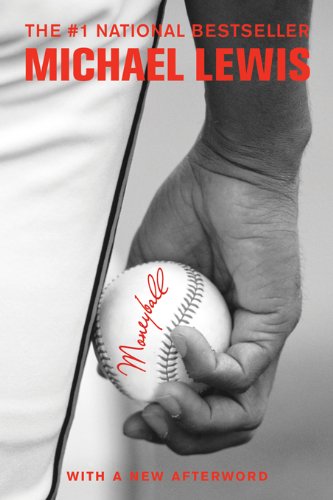

This article is an excerpt from the Shortform summary of "Moneyball" by Michael Lewis. Shortform has the world's best summaries of books you should be reading.
Like this article? Sign up for a free trial here .
What does a baseball scout do? And what do MLB scouts look for in a player?
In Moneyball, Billy Beane argues that not even a baseball scout can answer that. Scouting is subjective, after all, and data is not. He continually butts heads with his baseball scout team, who argue that MLB scouts are seasoned professionals, and know what they’re doing. But for a cash-strapped team like the A’s, Bean can’t afford to have draft busts. Read about why Beane chose to rely less on scouting.
Baseball Scouts and Their Inconsistencies
Anyone involved in playing professional baseball or managing a professional team cannot escape the weight of the sport’s history. As America’s national pastime, it’s been played in the United States since before the Civil War. And this long and storied tradition has created a century and a half’s worth of conventional wisdom about best practices and how the game ought to be played.
Baseball’s old guard—a consortium of coaches, baseball scout groups, general managers, owners, former players, and sports journalists—have rigid conceptions of what makes a good player and how teams win games. But the central insight of Moneyball is that much of this conventional wisdom, propagated by baseball’s traditional gatekeepers, is hopelessly wrong.
Sandy Alderson, general manager of the A’s when Billy Beane makes his transition to the front office, is considered a baseball outsider by many within the organization, mainly because he has never played baseball himself. But because he has never played, he is unbiased and unattached to baseball’s customary way of doing things and open to new approaches to the game.
He observes that most of the things baseball insiders love about the game and value most in players—particularly big, flashy plays like home runs and stolen bases—do little over the course of a season to help the team score runs and win games. Simply put, most of the things major league baseball teams do don’t actually work.
Because after all, the purpose of a baseball team isn’t to compile home runs or a high batting average: it’s to score runs and win games. Therefore, every player and every play ought to be judged solely on the basis of how it contributes to the win column. Alderson, now in charge of spending the team’s suddenly scarce funds, needs to ensure that every penny is spent wisely.
Sandy Alderson and Data Baseball
Alderson pioneers a scientific, data-driven, and top-down approach to managing a baseball team. He thinks little of the opinions and collective wisdom of the old baseball men and is dismissive of the yardsticks by which they measure performance.
He is particularly critical of batting average statistics, and the way in which coaches and scouts treat them as the gold standard for success. Batting average is simply the ratio of hits to total at bats. If a player has five plate opportunities in a game and scores two hits, he has a batting average of .400 (2 hits/5 at bats). Yet in running the numbers, Alderson sees that total team batting average, for all the emphasis the old guard places upon it, bears little relation with total runs scored. Alderson concludes that a high batting average does little to actually win games.
Removing Luck from Baseball Analysis
James begins publishing annual treatises, in which he highlights the uselessness of commonly-cited baseball statistics like errors, runs batted in (RBIs). Another of James’s key insights is that much of the data that managers, baseball scout wisdom, and GMs use to evaluate players’ skill is based on luck and subjective opinion. In publishing his annual baseball abstracts, James attempts to strip as much luck out of baseball analysis as possible.
James also points out the absurdity of that statistic revered by baseball’s old guard: the RBI. A batter earns an RBI when they score a hit that results in another player scoring a run. By definition, it is a product of luck: a batter has to have the good fortune to be at bat when other players are already on base. The batter will, of course, have had nothing to do with their teammates getting on base before them. It is a matter of luck to even have the opportunity to score an RBI. A batter who hits a single with a runner in scoring position and a batter who hits a single with no one on base have performed the same athletic feat—but one will be credited with an RBI, while the other won’t.
Billy Beane Defies Baseball Scout Wisdom
By 1997, Billy Beane is the general manager of the Oakland A’s. Inspired to read James by former Oakland GM Sandy Alderson, Billy is determined to use James’s insights to build a winning A’s team. Moreover, sabermetrics will allow him to build a successful team on the cheap, as they offer a guide on how to identify undervalued players. The rest of the league can keep their marquee home run hitters and base stealers; Billy wants the guys who know how to get on base.
Billy has good reasons for defying baseball’s conventional wisdom. He had been the victim of wrongheaded ideas about what makes a successful baseball player. People employed to baseball scout saw him make flashy plays during his high school playing days and then rushed him into a professional playing career that he never really wanted. He had failed partly due to his own insecurities and mental hang-ups, but also because he had been wrongly labeled a star.
Now, as GM, Billy is determined never to make the same mistakes that had been made with him. He will draft and sign players whose performances—measured by data over the long term, not the starry-eyed reports of a baseball scout (or several) based on a handful of games—indicate that they are built for success in the major leagues. He will look for value in the types of players that are typically overlooked by other GMs.
While the baseball scout is undoubtedly valuable in an organization, part of the issue is that all MLB scouts are subjective. For the sake of executing their Moneyball strategies, the Oakland A’s prefer to use data.

———End of Preview———
Like what you just read? Read the rest of the world's best summary of Michael Lewis's "Moneyball" at Shortform .
Here's what you'll find in our full Moneyball summary :
- How Billy Beane first flamed out as a baseball player before becoming a general manager
- The unconventional methods the Athletics used to recruit undervalued players
- How Sabermetrics influences American baseball today






